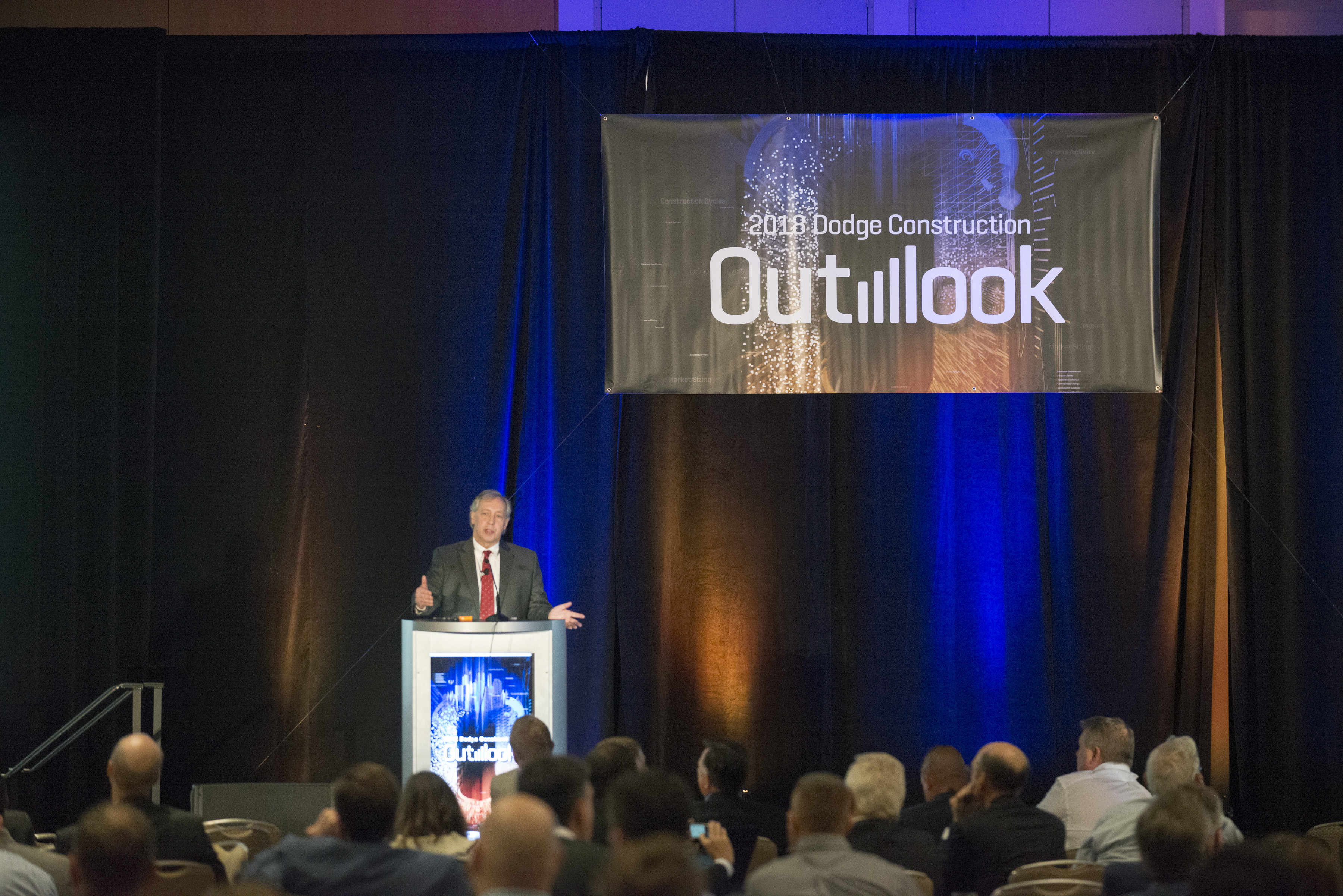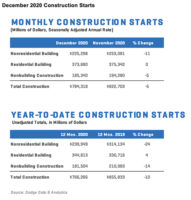U.S. construction starts are expected to climb slightly in 2018, according to the 2018 Dodge Construction Outlook. A 3% rise, to $765 billion, is expected, following a similarly modest 4% boost, to $746 billion, estimated for 2017.
The forecast was released at Dodge Data & Analytics' Dodge Outlook Executive Conference, held in Chicago on Nov. 2.
"The U.S. construction industry has moved into a mature stage of expansion," says Robert Murray, chief economist for Dodge Data & Analytics. "After rising 11% to 13% per year from 2012 through 2015, total construction starts advanced a more subdued 5% in 2016."
The forecast predicts a 9% rise in single-family housing, based on the expectation of continued job growth as well as older millennials, now in their 30s, entering the housing market. In multifamily housing, an 8% drop is expected; the market will see a decrease for the second year in a row, following an all-time high of $95.2 billion in 2016. Murray attributes the downward trend to demographic shifts as well as changes in bank lending regulations.
In the commercial sector, a growth of 2% is expected, a second year of modest increase following a 21% spike in 2016 in this area of the market.
Buoyed by the rise in e-commerce, the demand for warehouses is expected to continue to increase as store and hotel construction decline.
Institutional building experienced a 14% boost in 2017, largely due to large transportation terminal construction at major airports in New York City, Los Angeles and Orlando, as well as the $1.6 billion Penn-Farley Train Hall Redevelopment in New York. In 2018, growth is expected to slow to 3%, with educational facilities seeing an uptick of 11%, to $60.3 billion. Murray also cites "gains for schools and health-care facilities" as a cause for growth.
Manufacturing plant construction declined in 2015 and 2016, after surging in 2014 due to construction of energy plants. After petrochemical plants provided a robust 27% jump in 2017, construction is expected to decline 1%, to $25.1 billion, in 2018.
Public works grew only 1% in 2017 and will see a slight bump, to 3%, in 2018. Reconstruction efforts following Hurricanes Harvey and Irma will account for part of the increase, Murray notes, adding, "The specifics of a $1-trillion infrastructure program by the Trump administration have yet to materialize, so activity continues to hover around, basically, the plateau for construction starts reached a couple of years ago."
The electric-utility and gas-plant sector will see the largest 2018 drop. It is expected to decline 13%, to $28 billion, falling for the third year in a row after the staggering 128% boost took the total to $57.4 billion in 2015.
Overall, the outlook for 2018 is cautiously optimistic. "There are several positive factors [that] suggest that the construction expansion has further room to proceed," Murray says.




.png?height=200&t=1668551703&width=200)

Post a comment to this article
Report Abusive Comment